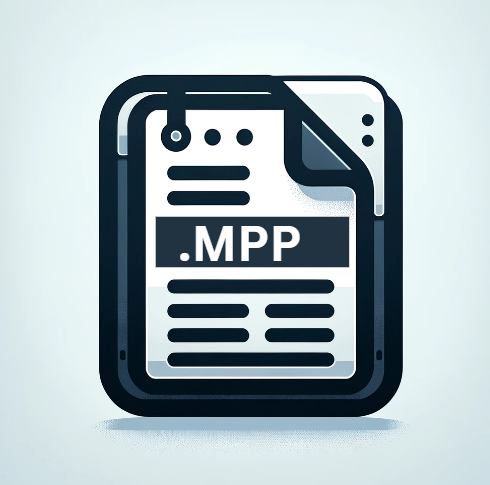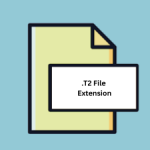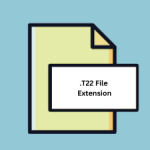.MPP File Extension

Microsoft Project File
| Developer | Microsoft |
| Popularity | |
| Category | Data Files |
| Format | .MPP |
| Cross Platform | Update Soon |
What is an MPP file?
The .MPP file extension is primarily associated with Microsoft Project, a powerful project management software developed by Microsoft Corporation.
These files contain valuable project-related data, such as tasks, schedules, resource allocation, and more, making them indispensable for project managers and teams.
More Information.
The .MPP file extension has a rich history dating back to the early days of project management software. Initially introduced as “Microsoft Project for Windows” in 1990, it aimed to streamline project planning and management.
The .MPP file format was designed to store project data efficiently, enabling users to create, edit, and share complex project plans.
Origin Of This File.
Microsoft Project was first introduced in 1984 for the Macintosh, and it gained immense popularity due to its capabilities in helping organizations plan, track, and manage projects.
The .MPP file extension, associated with Microsoft Project, serves as the default file format for saving project data, making it easier to share and collaborate on project plans.
File Structure Technical Specification.
Understanding the technical aspects of the .MPP file format is crucial for efficient project management. .MPP files are binary files, which means they contain both human-readable and machine-readable data.
The technical specifications of the .MPP file format may vary slightly between different versions of Microsoft Project, but they typically include the following elements:
- Project Information: This section stores metadata about the project, including its name, start and finish dates, and other project-level settings.
- Task Information: The majority of the .MPP file is dedicated to storing task-related data, such as task names, durations, dependencies, and resource assignments.
- Resource Information: This section contains details about project resources, including resource names, types, and cost rates.
- Calendar Information: Project calendars, work hours, and exceptions are stored here.
- Assignment Information: This section links tasks to resources and includes assignment-specific data, such as work hours and costs.
- Custom Fields: .MPP files allow users to define custom fields to store additional project-specific data.
- Formatting and Views: Information about the project’s formatting, views, and settings is included.
- Other Elements: Various other data, including macros, custom views, and filters, may be present in the .MPP file.
How to Convert the File?
Converting .MPP files to other formats can be useful for sharing project data or collaborating with individuals who don’t use Microsoft Project. Here are common methods to convert .MPP files:
Using Microsoft Project (Save As):
- Open the .MPP file in Microsoft Project.
- Go to the “File” menu.
- Select “Save As” or “Export,” depending on your version of Microsoft Project.
- Choose the desired file format for conversion (e.g., PDF, XML, CSV).
- Follow the on-screen prompts to configure the export settings.
- Click “Save” or “Export” to convert and save the file in the chosen format.
Online File Converters:
- Numerous online converters and tools are available that can convert .MPP files to various formats, such as PDF, CSV, or XML.
- Search for an “MPP to your desired format converter using your preferred search engine.
- Upload your .MPP file to the online converter.
- Configure any conversion settings if required.
- Initiate the conversion process, and the converter will generate the converted file.
- Download the converted file to your computer.
Third-Party Software:
- Some third-party software applications are designed specifically for .MPP file conversion, providing more advanced options and flexibility.
- Look for software that supports .MPP files and offers the output format you need.
- Download and install the software on your computer.
- Open the software and import your .MPP file.
- Choose the desired output format and configure any settings.
- Initiate the conversion process, and the software will create the converted file.
Using Microsoft Project for the Web:
- If you have access to Microsoft Project for the Web, you can convert .MPP files directly within the web application.
- Log in to your Microsoft Project for the Web account.
- Open the project that contains the .MPP file.
- Go to the export or save options within the web application.
- Choose the format you want to convert the .MPP file to (e.g., PDF, CSV).
- Configure any additional settings if needed.
- Save or export the file in the chosen format.
Using Alternative Project Management Software:
- If you have alternative project management software installed that supports .MPP file conversion, you can open the .MPP file in that software and then export it to your desired format.
- Ensure that the alternative software is compatible with .MPP files.
- Open the .MPP file within the alternative software.
- Look for export or save options and select the desired format.
- Configure any settings as necessary.
- Save or export the file in the chosen format.
Advantages And Disadvantages.
Advantage:
- Comprehensive Project Management: Microsoft Project offers robust project management capabilities, allowing users to create detailed project plans with tasks, dependencies, resources, and more.
- Efficient Resource Allocation: .MPP files enable project managers to assign resources to tasks and track resource utilization, ensuring optimal resource allocation.
- Collaboration: .MPP files can be shared with team members, making it easy to collaborate on project plans and keep everyone informed.
- Visualization: The software provides various visualization tools, such as Gantt charts and timelines, to help users understand project progress at a glance.
- Integration: Microsoft Project integrates seamlessly with other Microsoft Office applications, enhancing productivity and data sharing.
Disadvantage:
- Cost: Microsoft Project is not free and requires a separate license, which can be expensive for small businesses and individuals.
- Learning Curve: Due to its extensive features, Microsoft Project has a steeper learning curve compared to simpler project management tools.
- Compatibility: .MPP files may not be easily opened by non-Microsoft project management software, limiting compatibility with other tools.
How to Open MPP?
Open In Windows
- Microsoft Project: If you’re using Windows, the most straightforward way to open .MPP files is by using Microsoft Project. Ensure you have the software installed, and then double-click the .MPP file to open it.
- Microsoft Project Viewer: You can use third-party .MPP file viewers available for Windows, such as MOOS Project Viewer, to open and view .MPP files without the need for the full Microsoft Project software.
Open In Linux
- ProjectLibre: ProjectLibre is an open-source project management software available for Linux. It can open .MPP files and provides functionality similar to Microsoft Project.
- GanttProject: GanttProject is another open-source project management tool for Linux that can open and edit .MPP files. It’s a lightweight and user-friendly option.
Open In MAC
- Microsoft Project for the Web: If you are using macOS, you can access and open .MPP files using a web browser through Microsoft Project for the Web, which does not require installation.
- OmniPlan: OmniPlan is project management software designed for macOS. It supports .MPP file compatibility and offers a native macOS experience.
Open In Android
- Microsoft Project for Android: If you need to access .MPP files on an Android device, you can use the Microsoft Project app for Android. It allows you to view and edit .MPP files on your mobile device.
- Third-Party Apps: There are third-party apps available on the Google Play Store that claim to support .MPP files. Be sure to check reviews and compatibility before installing.
Open In IOS
- Microsoft Project for iOS: Microsoft Project offers a mobile app for iOS devices, allowing you to view and edit .MPP files on your iPhone or iPad.
- Project Planning Pro: Project Planning Pro is a third-party iOS app that supports .MPP files and provides project management capabilities on iOS devices.
Open in Others
- Web-Based Project Management Tools: Many web-based project management tools, such as Asana, Trello, or Wrike, offer the capability to import and work with .MPP files. Users can upload their .MPP files to these platforms, and the tools will convert and display the project data in a format that can be edited and managed online. This approach is platform-agnostic, as it can be accessed from any device with an internet connection and a web browser.
- Online .MPP File Viewers: There are several online .MPP file viewers available that allow users to simply upload their .MPP files for viewing without the need to install any software. These viewers display the project information in a read-only format, making them useful for quick reference or collaboration. They are accessible on various platforms, including Windows, macOS, Linux, Android, iOS, and more.













